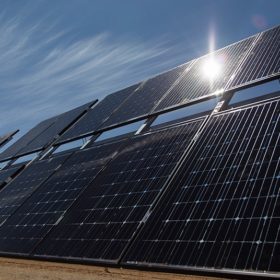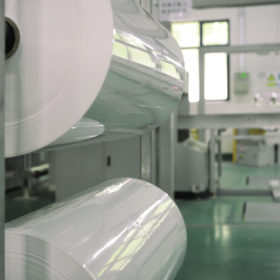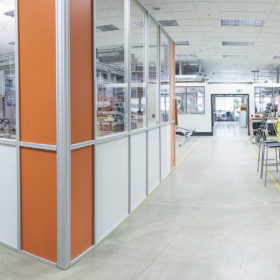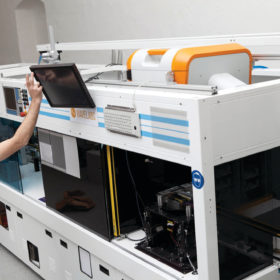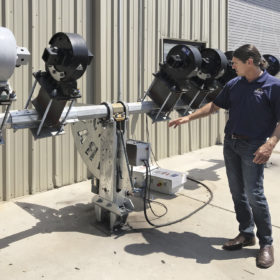The long read: Bifacial testing sites multiply in the US
Bifacial solar panel performance has become such a hot topic there are now at least four competing field test sites ramping up in the United States, each matching a different set of trackers and panels. DNV GL, Soltec, NREL and Sandia are all involved, and initial results are expected this year, once a year’s data has been collected.
Indian panel data could transform PV monitoring processes
Researchers say the use of clustering-based computation could remove the need for on-site inspections of panels by instead enabling real-time monitoring of degradation using only meteorological data.
The long read: The time is right
Kaco is launching a mass-produced string inverter with silicon carbide switches onto the market following 10 years of discussion about the technology within the industry. In the 100 kilowatt plus segment, the technology produces small, lightweight devices with few components.
The long read: Fit for the 21st century
Co-extruded backsheets are opening up novel circular possibilities for the solar industry, as well as driving durability and lowering costs, writes Netherlands-based materials specialist DSM.
The long read: Materials matter
As problems with component failure have already laid bare, there is a clear need for contract clarity at every stage of a PV project, from material and component sourcing to power purchase and operations agreements. Here, pv magazine investigates a little covered issue for module buyers, which could threaten insurance coverage and the overall success of a project further down the line.
Substantial solar gains to be had from clean air – study
Eliminating emissions from the air would increase solar radiation by an average of 11%, allowing solar cells to generate one tenth more electricity claim researchers in a new study. Focusing on China, they say an additional 85-158 TWh of electricity could be generated annually in 2040, if the air was clean.
The long read: Flashing key for bifacial value
As new cell and module concepts move into large-scale production, and efficiencies are pushed ever higher, manufacturers of flash testing equipment must innovate to ensure their tools can provide reliable measurements, and cope with ever expanding production throughput. The expansion of bifacial technology beyond niche applications in particular raises new issues for flash testing standards. pv magazine spoke with several flasher manufacturers to shed light on the latest developments in this segment.
Better bifacial adoption, catalyzing innovation focus of Future PV Roundtable at REI
pv magazine’s Future PV Roundtable, held at the 2018 Renewable Energy India (REI) Expo in Greater Noida, discussed how India can better adopt bifacial solar cell and module technology – the future of power generation. Prominent industry speakers also put forth their views on how standards can catalyze solar innovation for India-specific challenges, and on PV materials and components for enhanced module efficiency and recycling.
Making India’s solar sector resource efficient
By adopting resource efficiency measures, the Indian PV solar manufacturing sector can reduce its material requirement from an estimated 12 million tons to 8.2 million tons by 2030. The resource-efficient approach will also increase efficiency to more than 30% from 6% in 2018, according to a study conducted under the European Union’s Resource Efficiency Initiative (EU-REI) Project.
The long read: A new test for trackers
The benefits of deploying bifacial solar panels on single-axis trackers are touted like snake oil these days, with promises of anywhere from 5 to 50% gains in energy output compared with a monofacial panel. Unfortunately, the field data that might delineate the actual energy gain of a bifacial panel on a tracker are hard to acquire, and the data that are available typically describe small-scale tests under tightly defined conditions.
